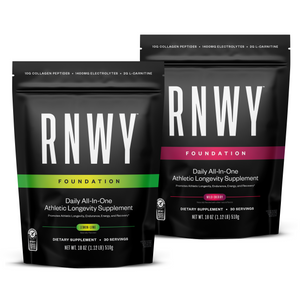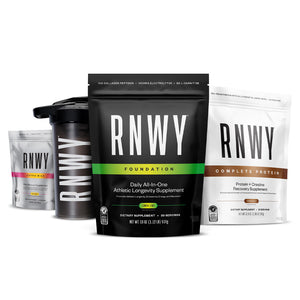What I Learned From My First Mile-High Mile
I was two months out of my first half marathon when I visited Denver, Colorado for the first time.
Upon arrival, my partner and I set out for a light jog around town- our favorite way to explore a new city. But at about three quarters of a mile in, my chest tightened up. My breaths became shallow and I even felt a little wheezy. By the last block, I was huffing and puffing. I felt terrible. Even worse, I felt disappointed in myself. How could I be so out of shape so quickly?
A World of Difference in 5,200 Feet
While I paused the run to catch my breath, I reflected on the situation. I had just completed a half marathon… in Miami, about as close to sea level as you can get. Now here I was, a whole mile higher, expecting the same physical output from myself as at six feet elevation.
This was my introduction to running at altitude. One year later, we moved out to Colorado and I began my official journey into trail, mountain, and high altitude running. These are the absolutely essential tips I discovered along the way to running in the Rockies.
Take It Easy
Never underestimate the power of the altitude. The higher the elevation, the lower your oxygen levels. This means that your cardio performance will decrease the higher you climb.
If you are visiting a high altitude city- such as Flagstaff, AZ or Leadville, CO- especially for a race or for training, make sure to take the time to acclimate. Arrive early and spend a couple of days training so your body can adjust to the difference in oxygen levels. Don’t be afraid to take it slow while you learn your physical limits running at elevation.
Pack Water
When I began my running journey in Miami, I rarely needed additional water. The air was water. Moving to an arid mountain climate, I quickly learned that bringing water along even on shorter runs is an integral part of training.
Not only does the low humidity levels leave you feeling parched faster, but the dry climate also means more dust and dirt particles in the air- and your mouth! Try nathonsports.com When it comes to packing water, live by the motto “better safe than sorry.”
Invest in Proper Footwear
One of the most rewarding ways to experience the mountain trails is by running them. Trail running is challenging yet scenic and a great way to take in local flora and fauna. However, it also means a much less predictable terrain than road running, with loose rocks, uneven surfaces, and downed branches.
Trail running shoes provide a sole decked out with lugs and specialized traction for rocky trails. They typically are less cushy with a lower drop, allowing your feet to better perceive the unevenness of the terrain and have better ground-feel. Though light, trail runners like runpeedland.com are also more durable to combat the mud, rocks, and other hazards likely to pop up on the trail.
Protect Yourself
Elevation gain doesn’t just affect the oxygen you breathe. For every 1,000 meters the UV levels from the sun increase by about 10 per cent! This means that training at altitude can pose a serious threat to your skin and health.
While sun protection should always be a concern, increasing your UV levels make it an absolute must. Apply your sunscreen at least 15 minutes before your run, making sure to cover not only your face, but neck, shoulders, hands, and any other exposed body surface. A hat, sunglasses, and UPF clothing can also be a life- and skin- saver. Don’t put off worrying about UV damage until it's too late.






